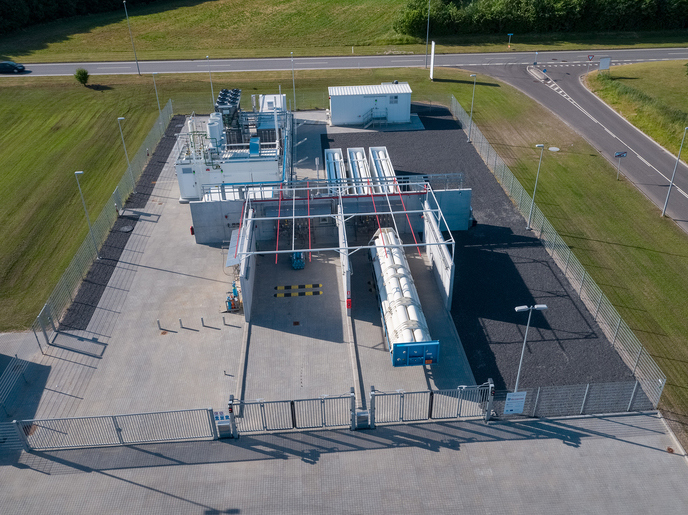Power-to-hydrogen plant in Denmark overcomes the renewable energy intermittency problem
The intermittent nature of solar and wind energy means there will always be times when these sources can produce more power than what consumers need. To prevent this surplus capacity from being wasted, power-to-gas looks like an ideal solution. Renewable power is converted into hydrogen before being used as such or being converted into syngas, methanol or ammonia. The former solution is called Power2Hydrogen or PtH2. It uses hydrogen directly and is considered as the most sustainable hydrogen production solution currently available. “If the power derives from renewable sources like wind turbines, the hydrogen can be regarded as green – as opposed to hydrogen produced from fossil fuels. Conversion into hydrogen makes it possible to store renewable energy and deliver it into sectors like industry and mobility,” says Diederick Luijten, vice president hydrogen energy for northern Europe at Air Liquide and HyBalance project manager. The technology had been known about for a while, but it had yet to be demonstrated across the entire value chain, at industrial scale and with multi-sectoral end use – which is considered as a prerequisite for investment to pay off. This demonstration was one of the main purposes of HyBalance. The six-strong consortium set out to build a PtH2 demonstration plant in Denmark. The plant was inaugurated in September 2018 in Hobro, a location selected for its vicinity to wind power, the high voltage electricity grid, gas networks and gas storage facilities. This 1.2 MW plant is one of Europe’s largest hydrogen plants based on electrolysis.
Demonstrating PEM electrolysis
Unlike most hydrogen plants using alkaline electrolysis – in which water splits into hydrogen and oxygen when electricity is introduced via two electrodes – the Hobro plant uses proton exchange membrane (PEM) electrolysis. It works like a PEM fuel cell with an inverted process, so that the end product is hydrogen rather than electricity. “The project aims at validating the PEM electrolysis technology and its ability to balance the grid in a flexible and dynamic manner. This includes high availability and short ramp-up/shut-down time for the grid. HyBalance is one of the first PtH2 facilities in Europe to provide grid-balancing services,” Luijten notes. In short, a PEM electrolysis plant can be quickly adapted to the varying amount of electricity available on the market, which is essential for converting and storing excess wind turbine electricity. Since it became operational, the facility has been delivering hydrogen to industrial customers and refuelling stations through pipelines and trailers. “The PEM electrolyser plant has gone through a series of performance tests and is able to produce 180 tonnes of hydrogen annually at high quality (≥ 99.998 %). The system is currently in line with the European Commission’s Fuel Cells and Hydrogen Joint Undertaking(opens in new window) (FCH JU) targets and produces hydrogen with an energy consumption in the range of 55 to 58 kWh/kg at nominal load,” Luijten explains. All in all, the project has successfully demonstrated the capacity of PtH2 to help decarbonise our economy. By the end of 2019, HyBalance had delivered over 76 tonnes of green hydrogen, filled more than 150 trailers and accumulated 13 300 hours of operational time. Luijten is confident that the plant will contribute to accelerating the deployment of PtH2 installations across Europe. The team will keep evaluating the performance of its fuel cells on a regular basis, while additional balancing tests will be conducted to assess potential gain by the end of the project in September 2020.







